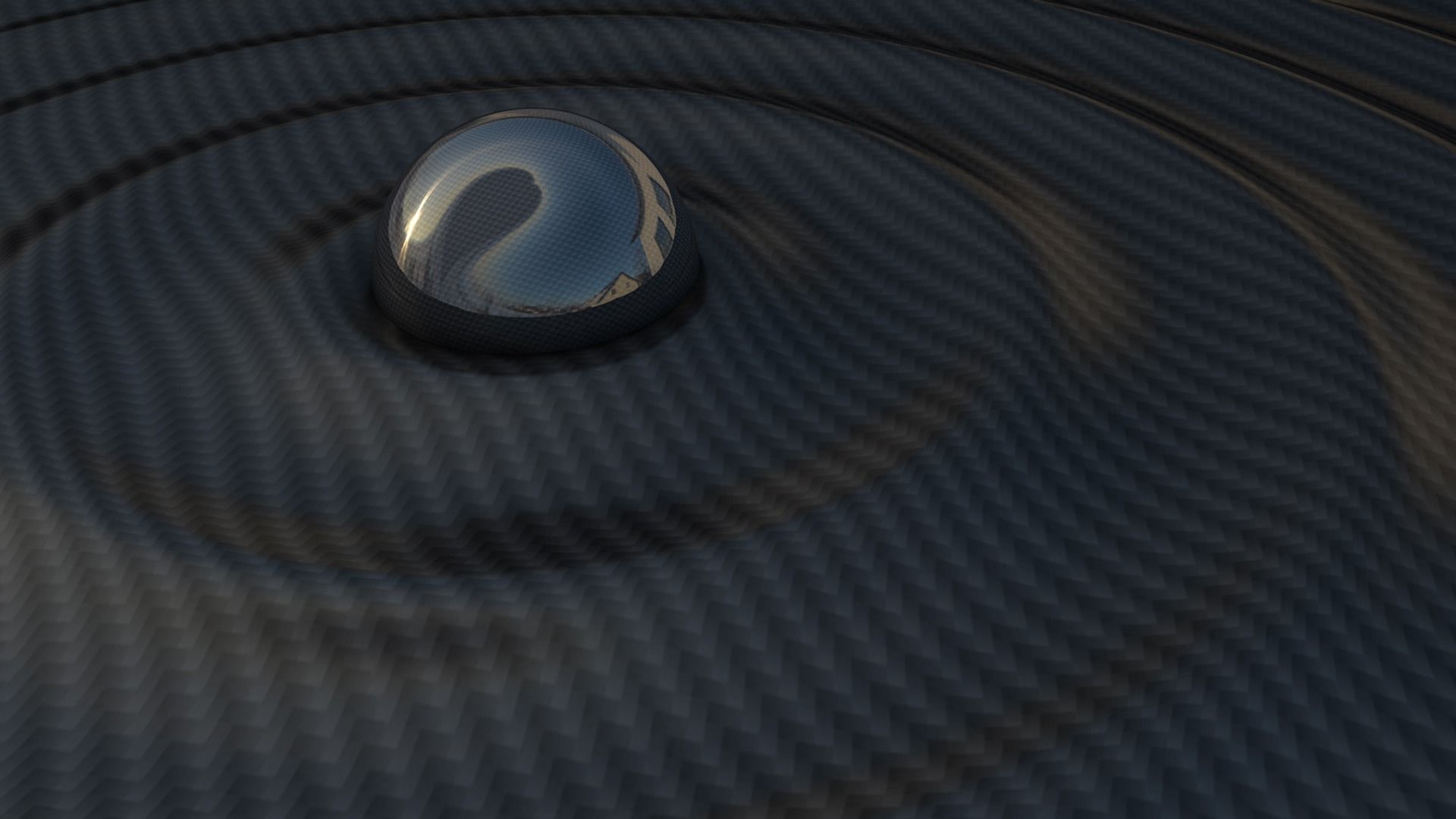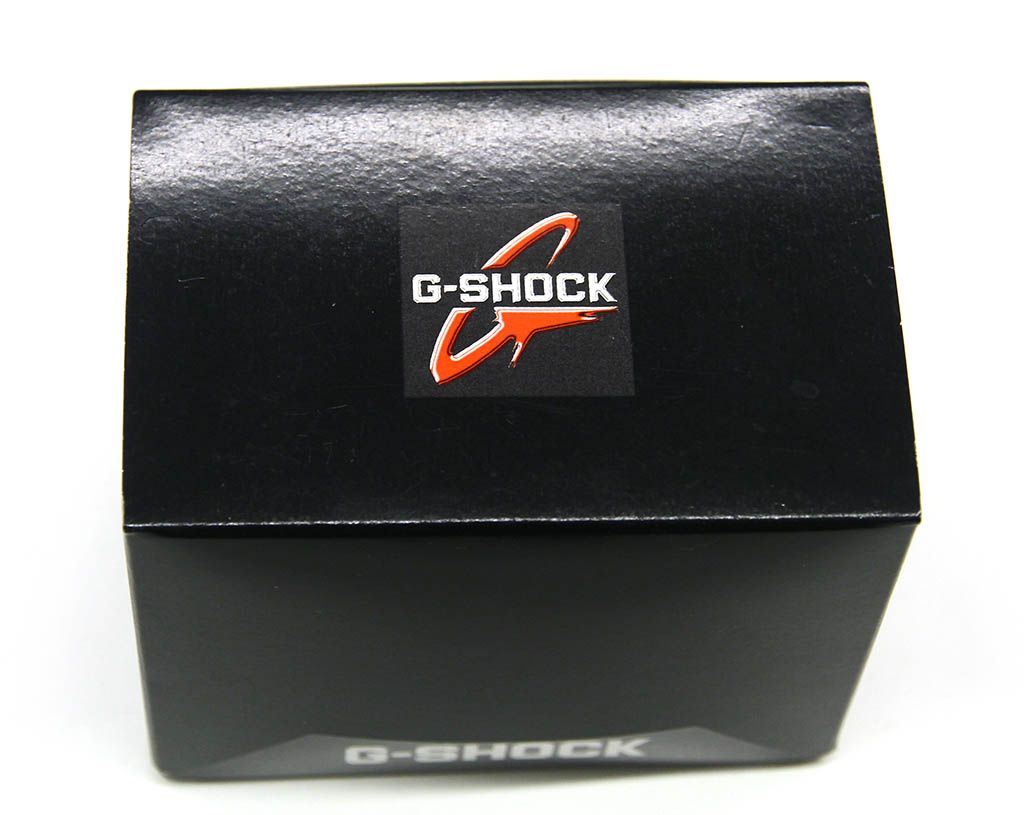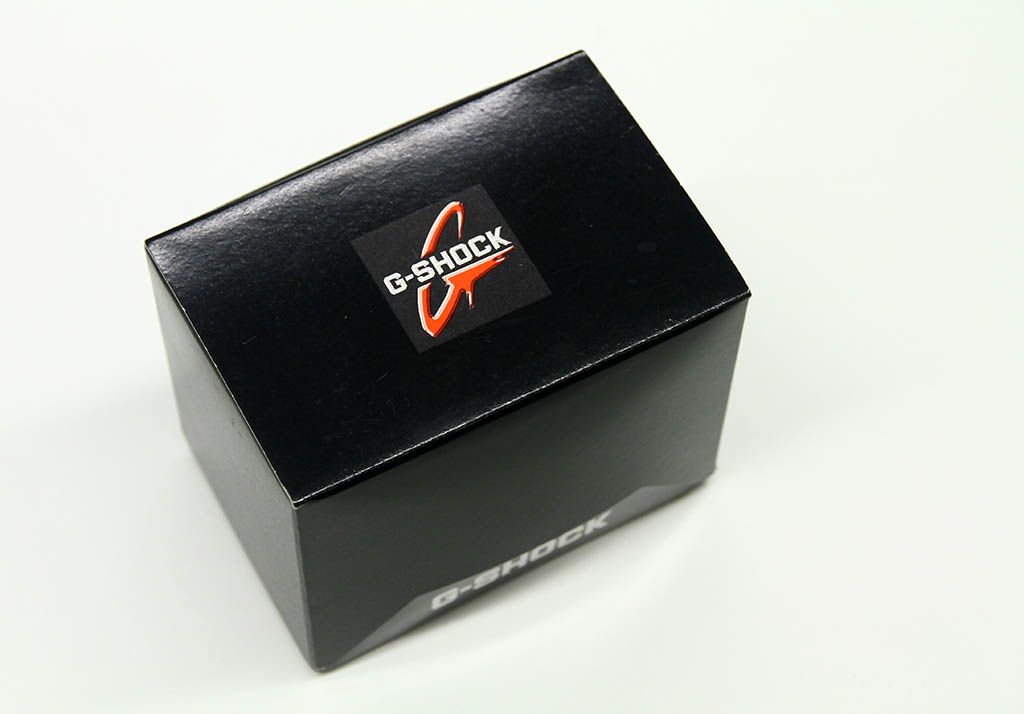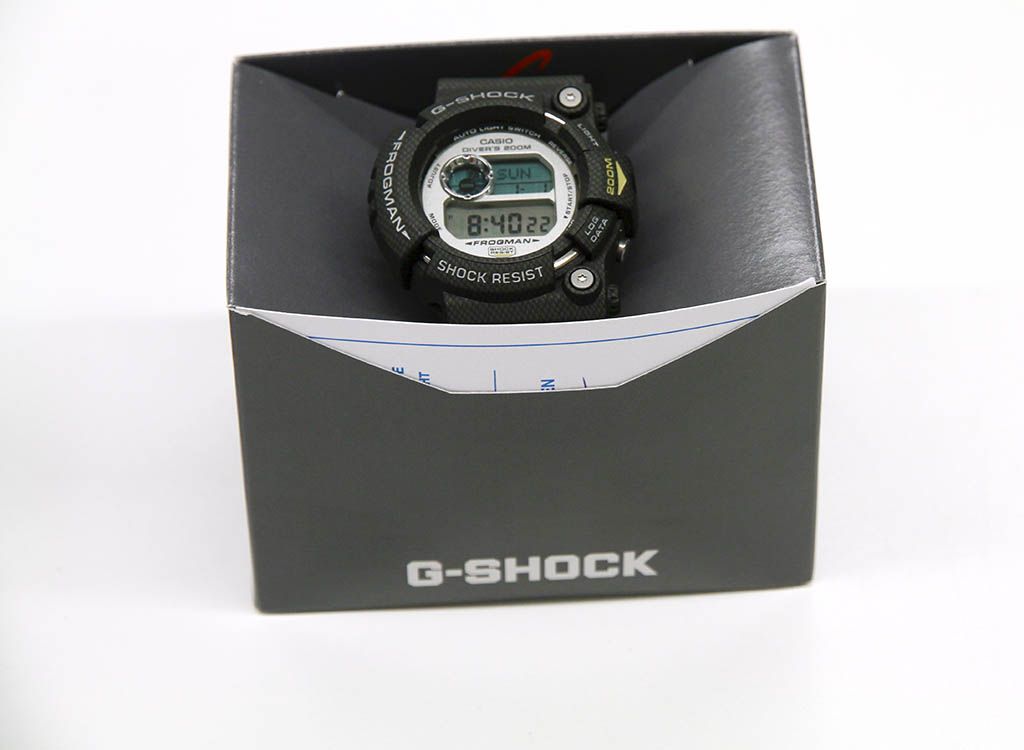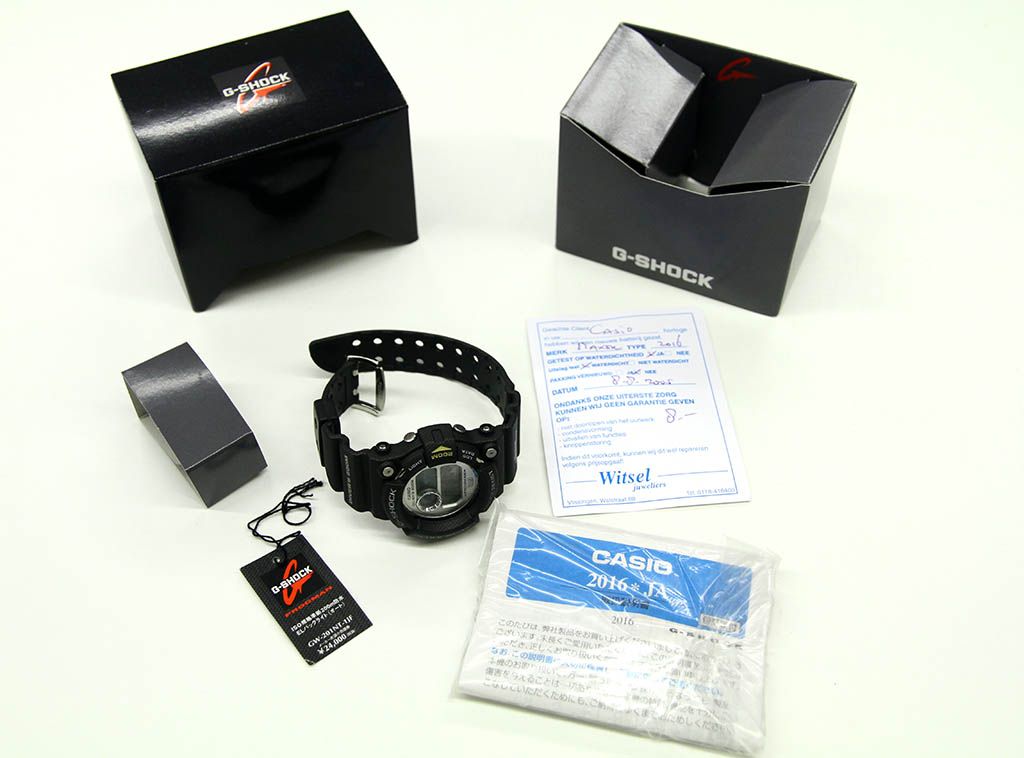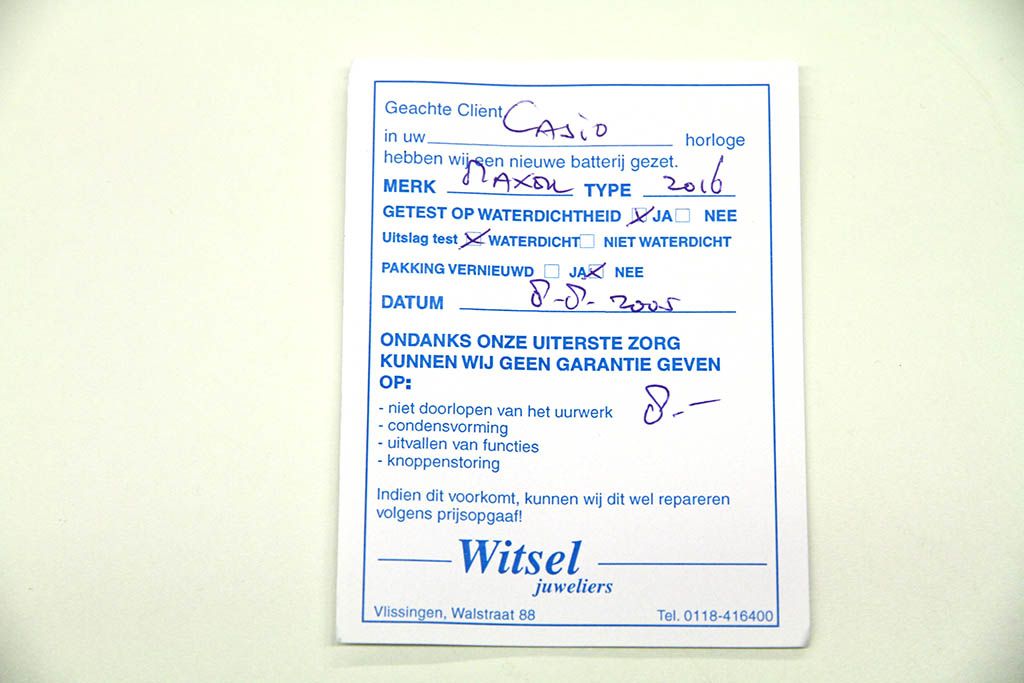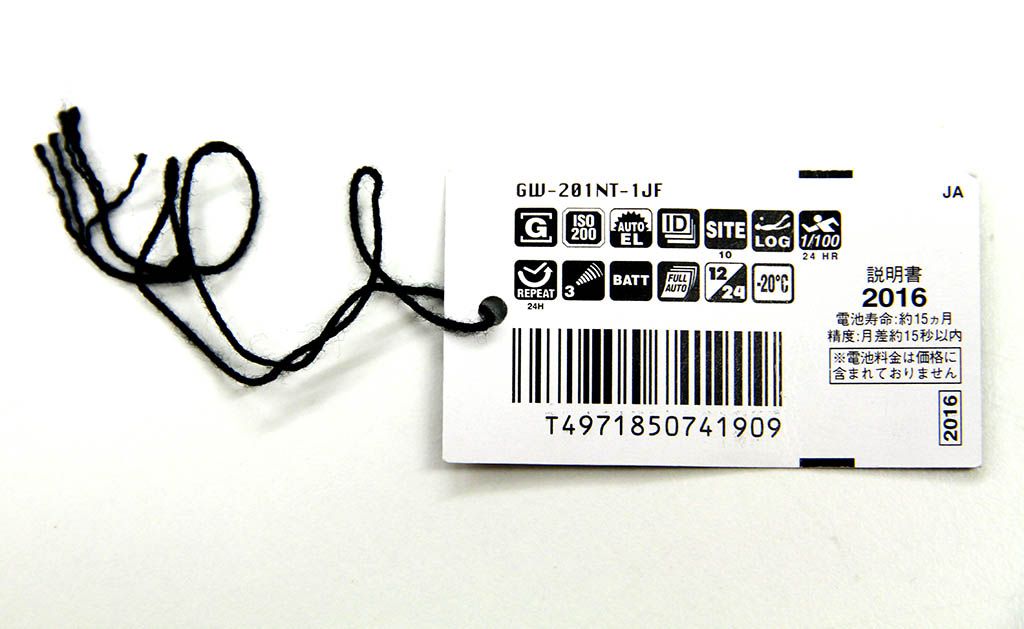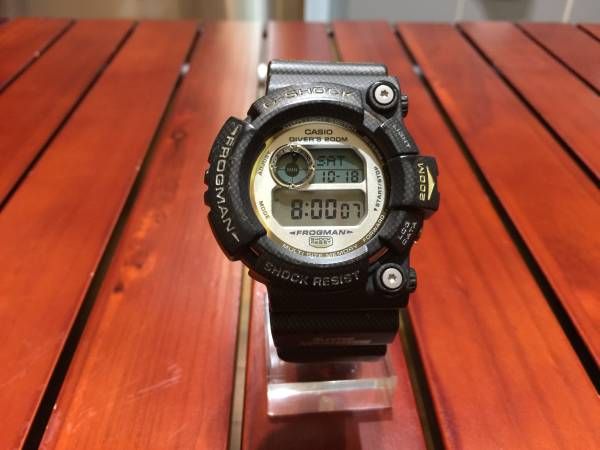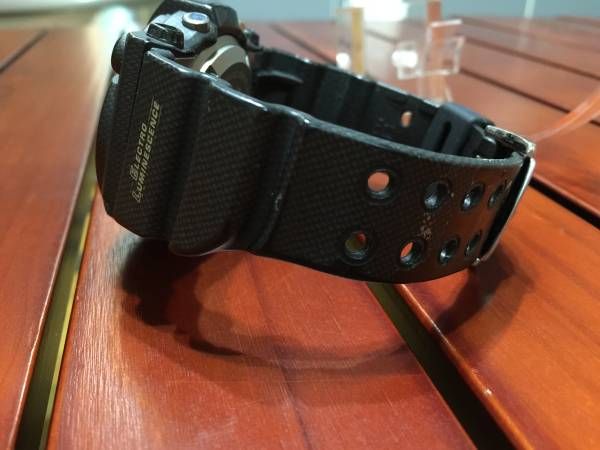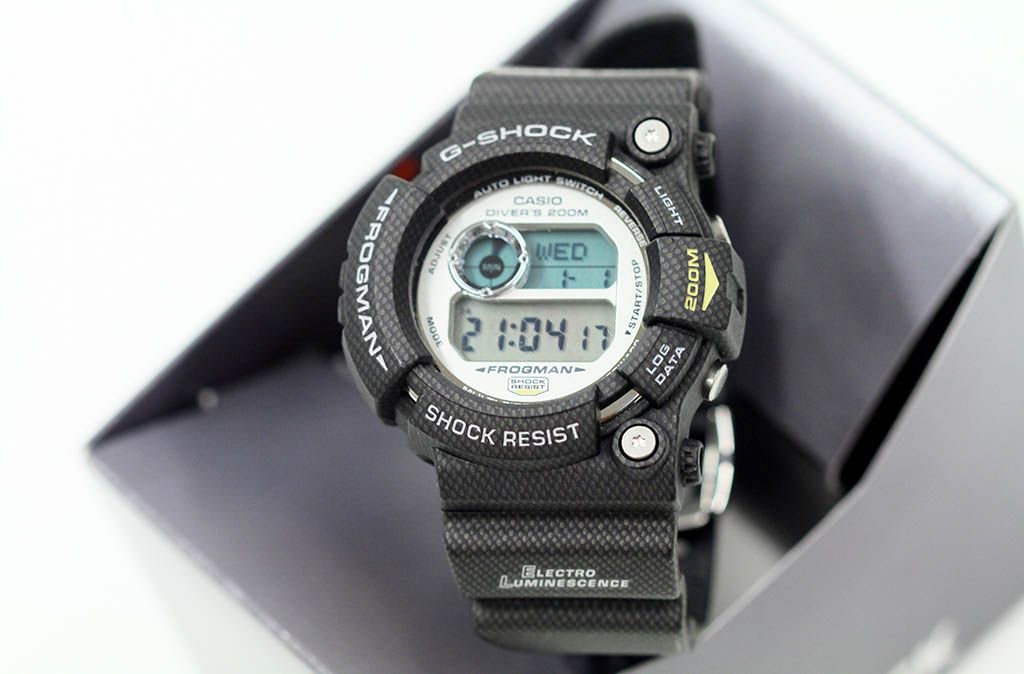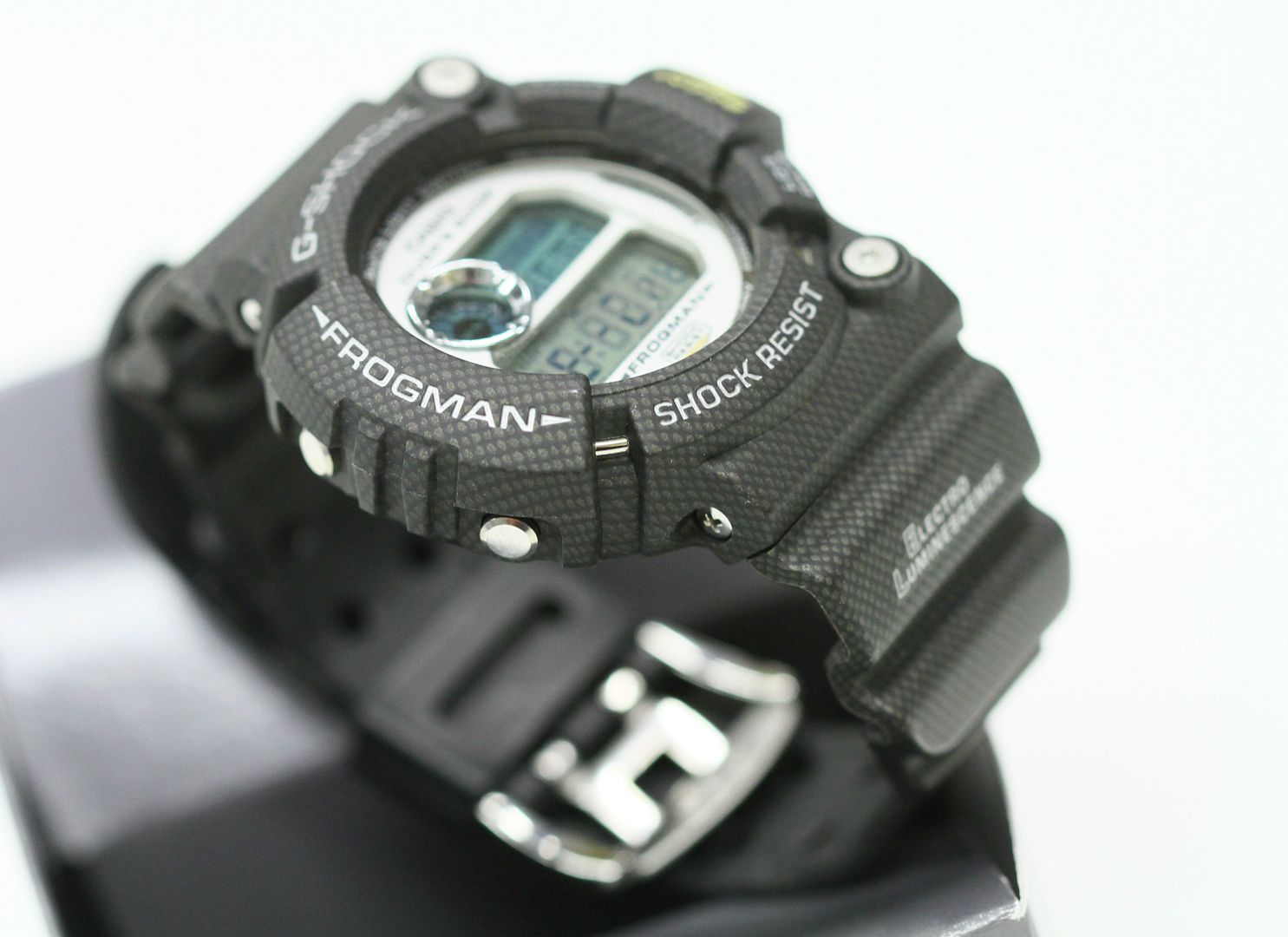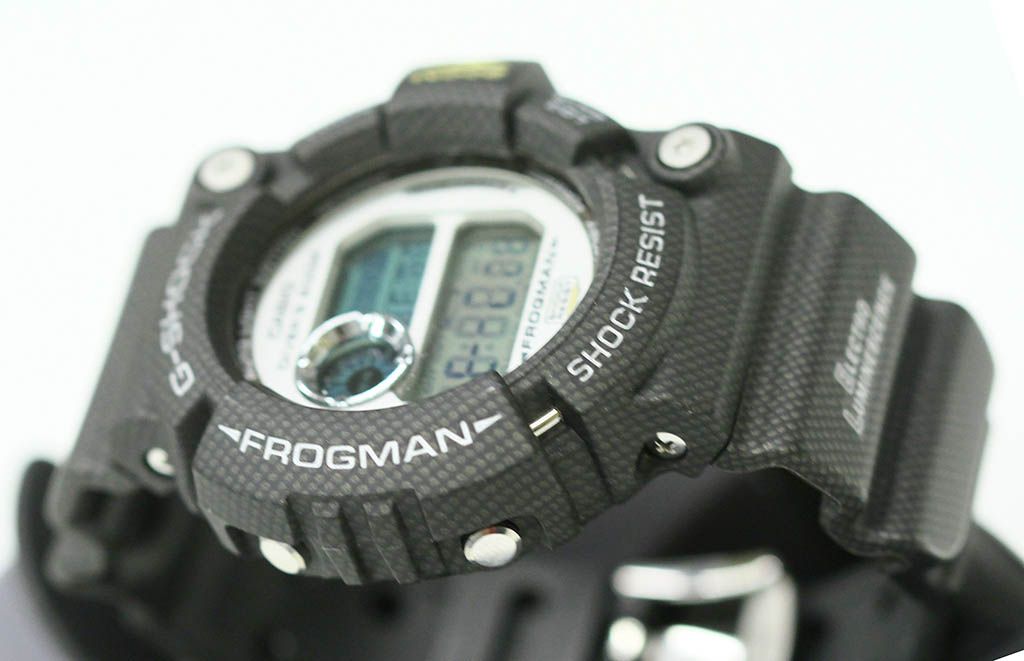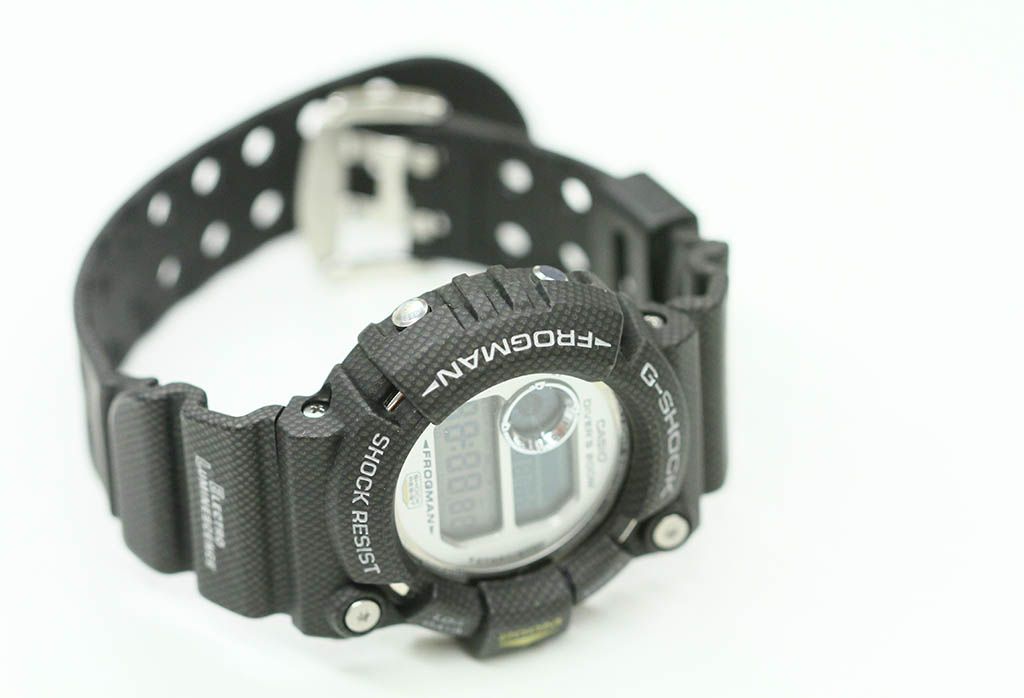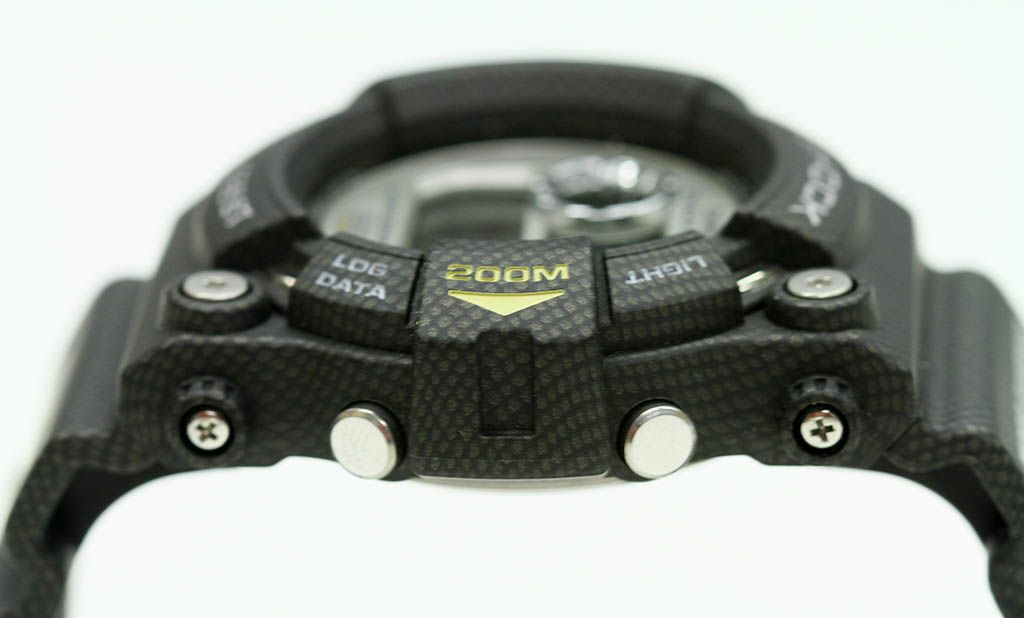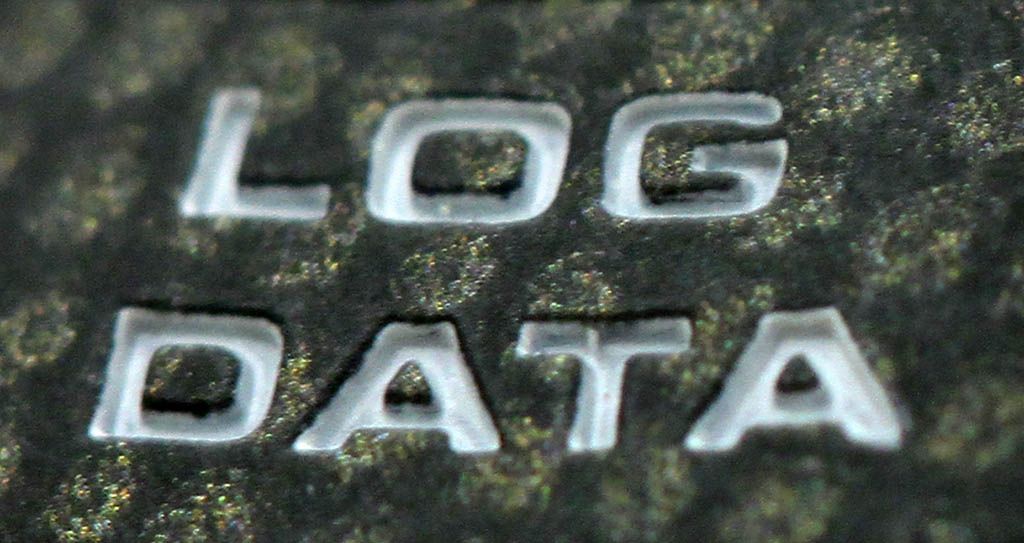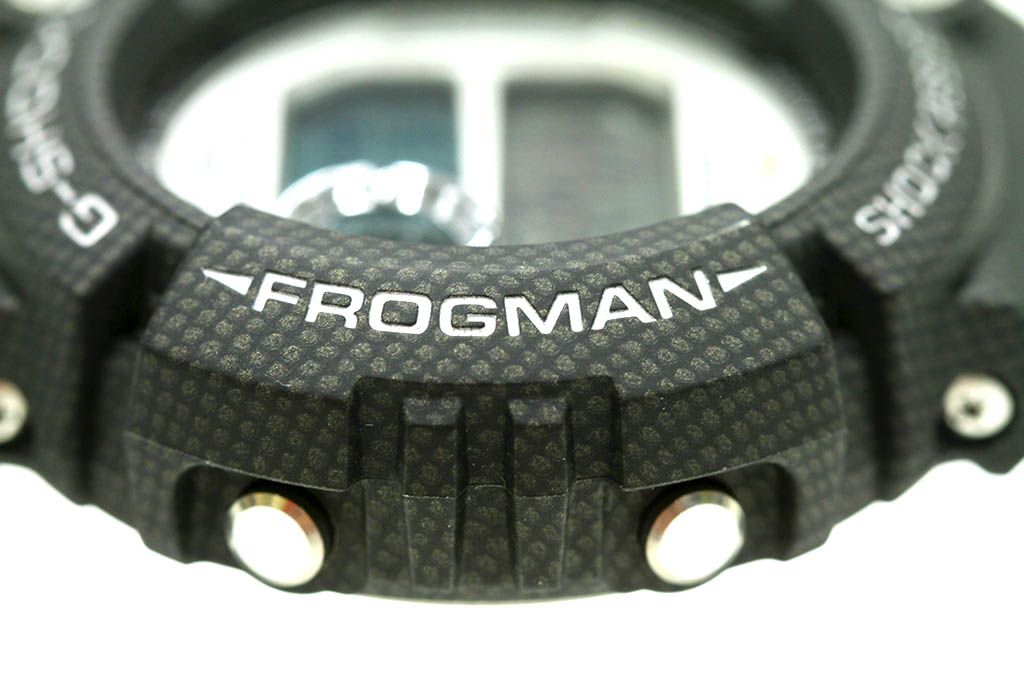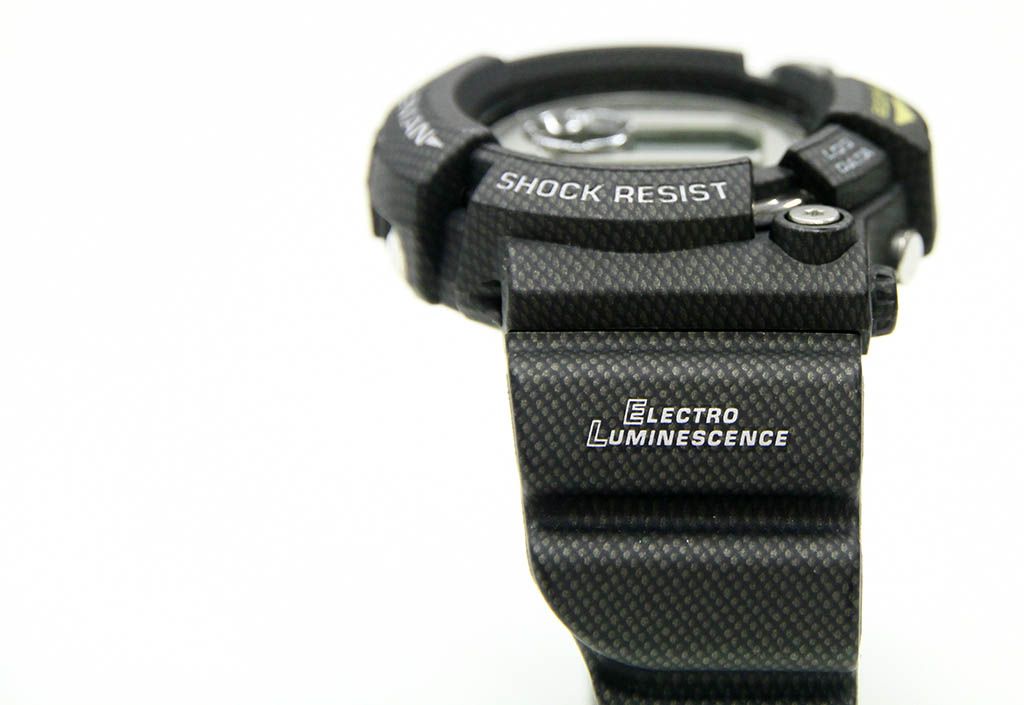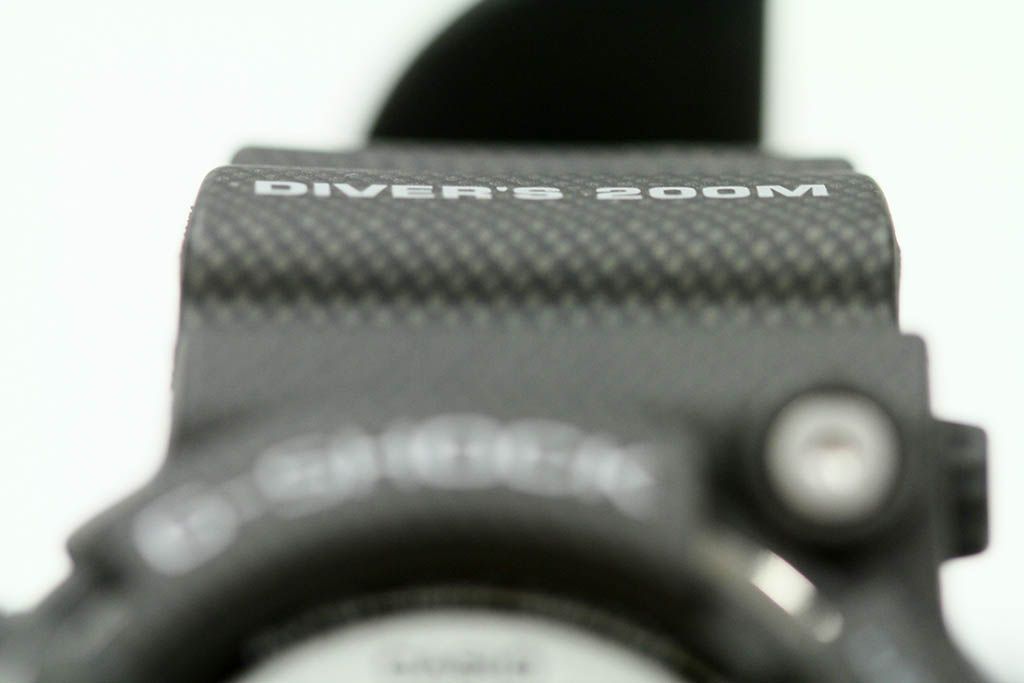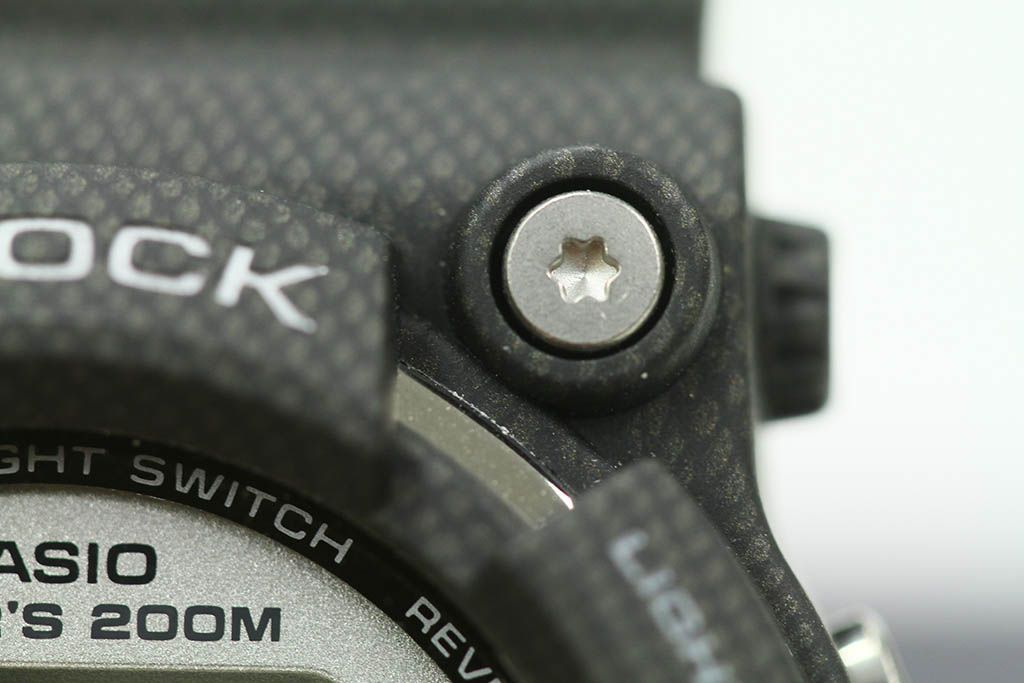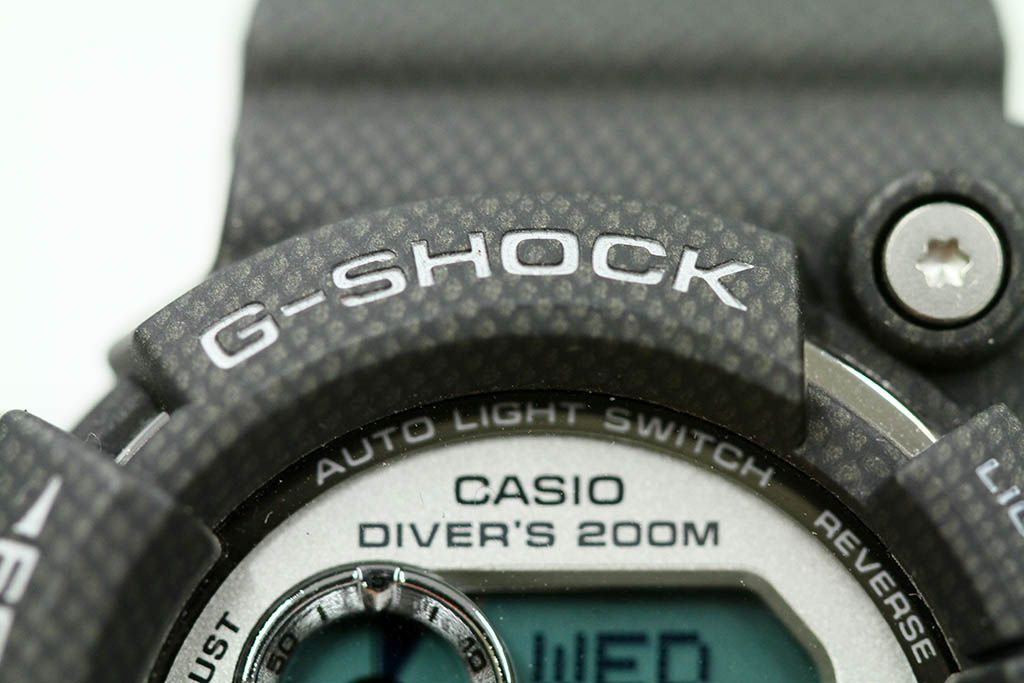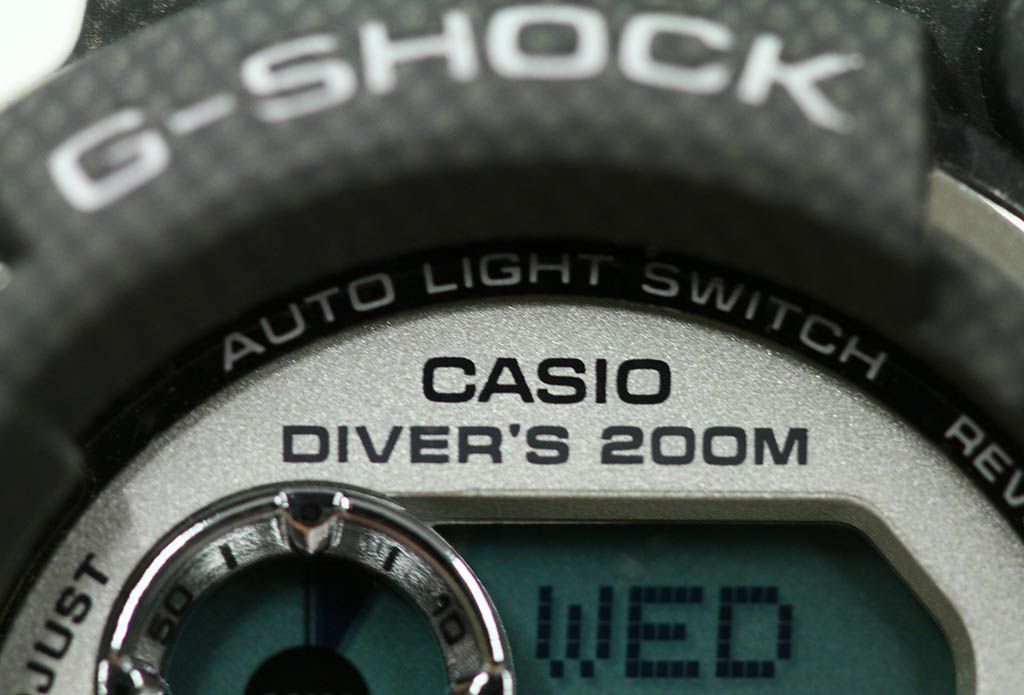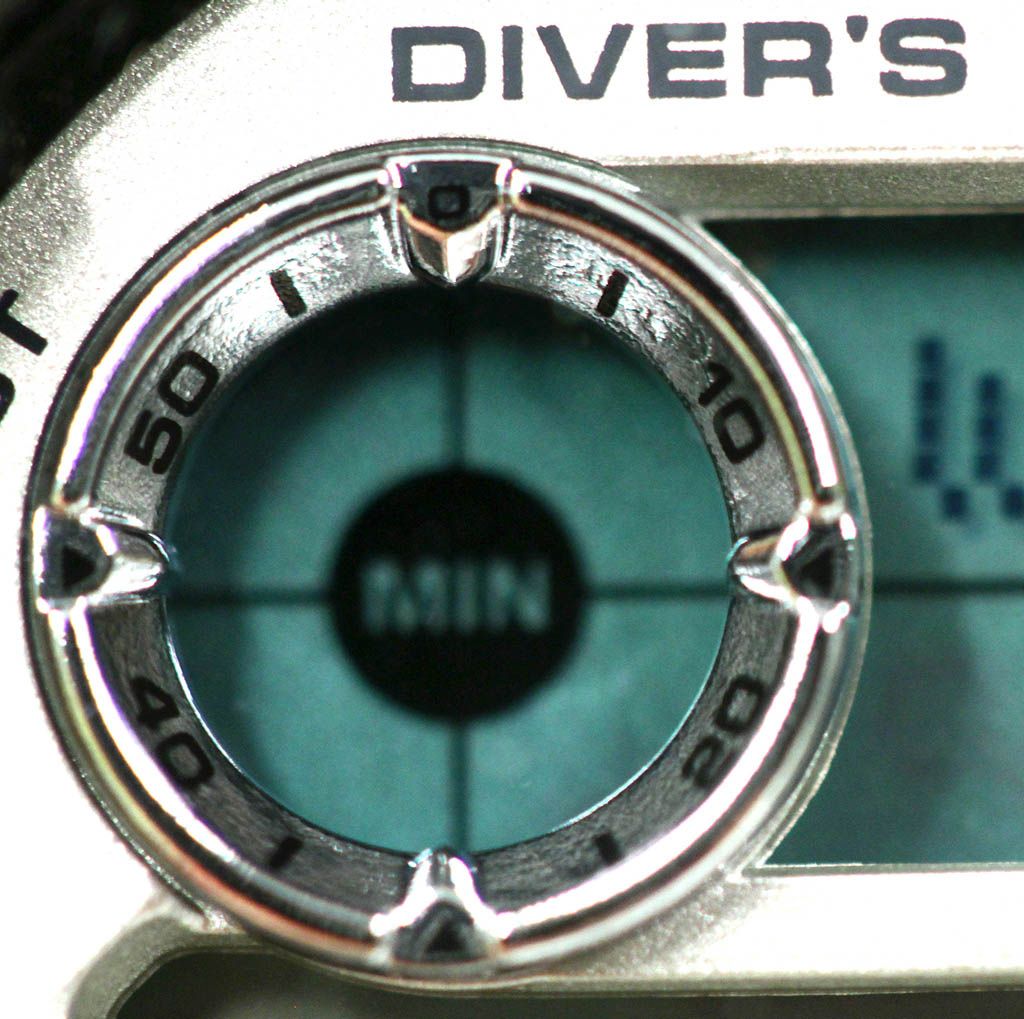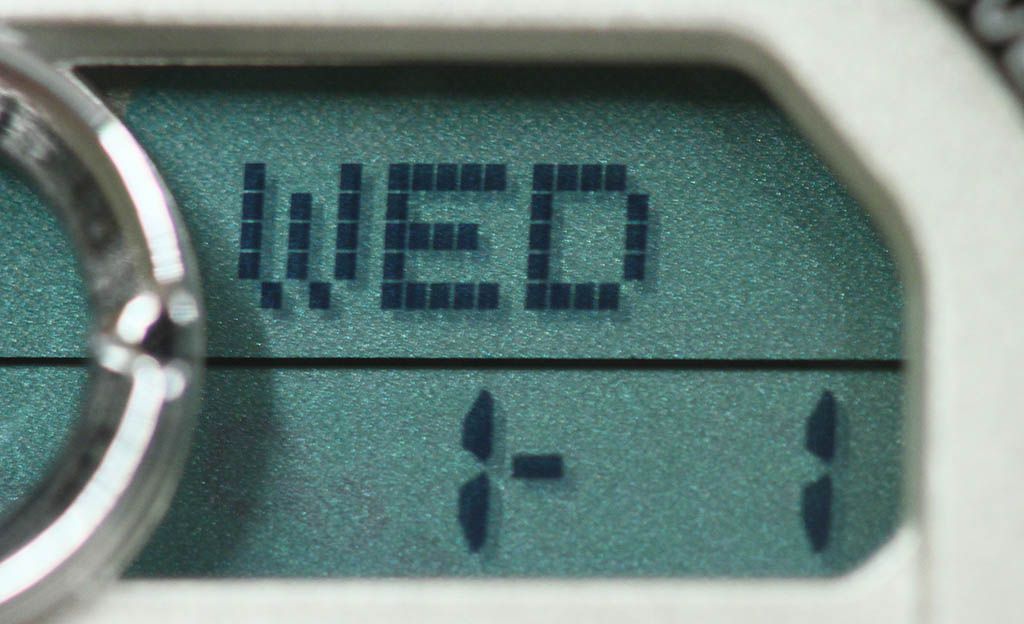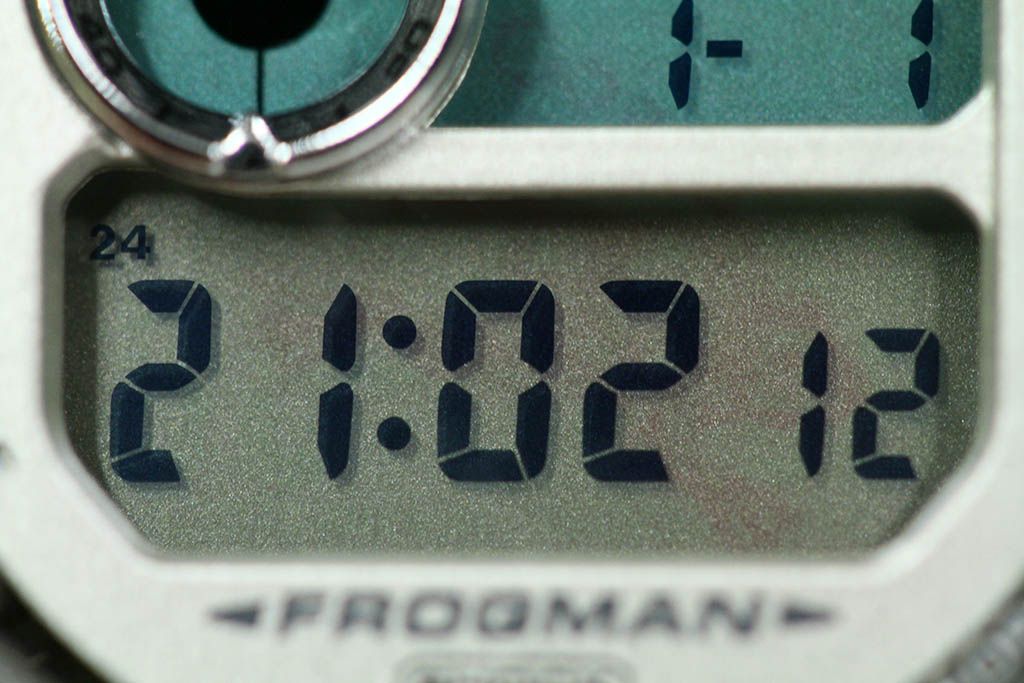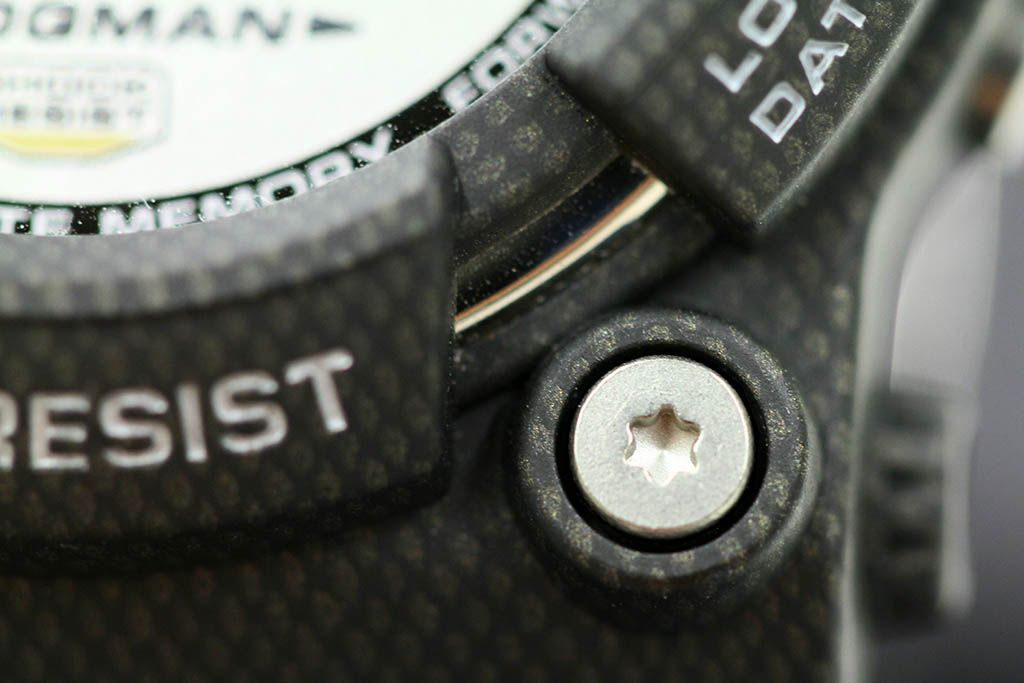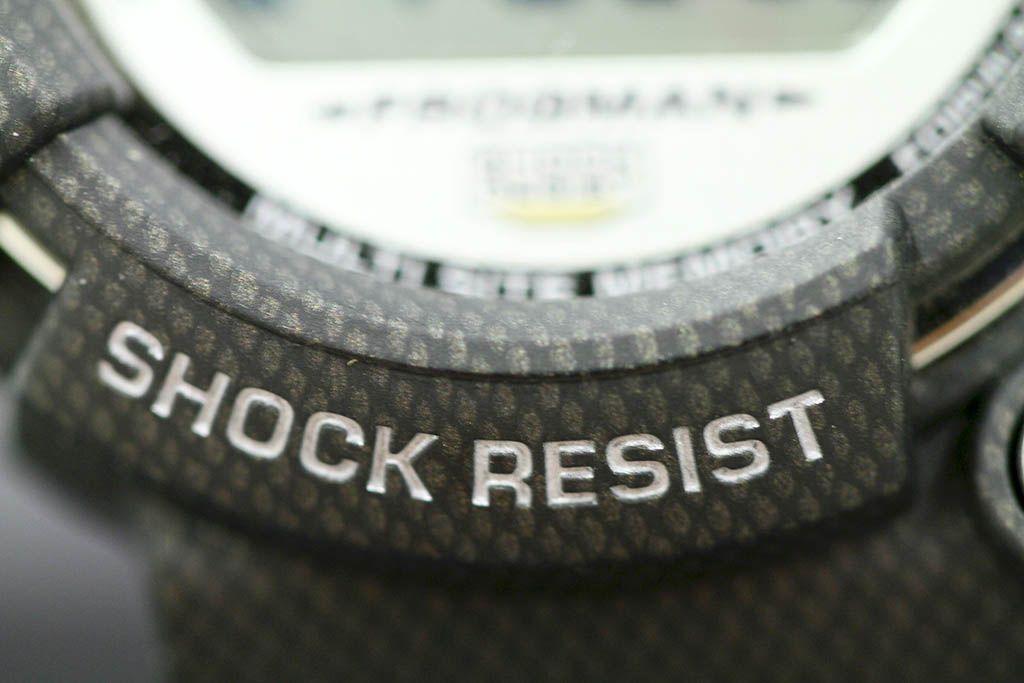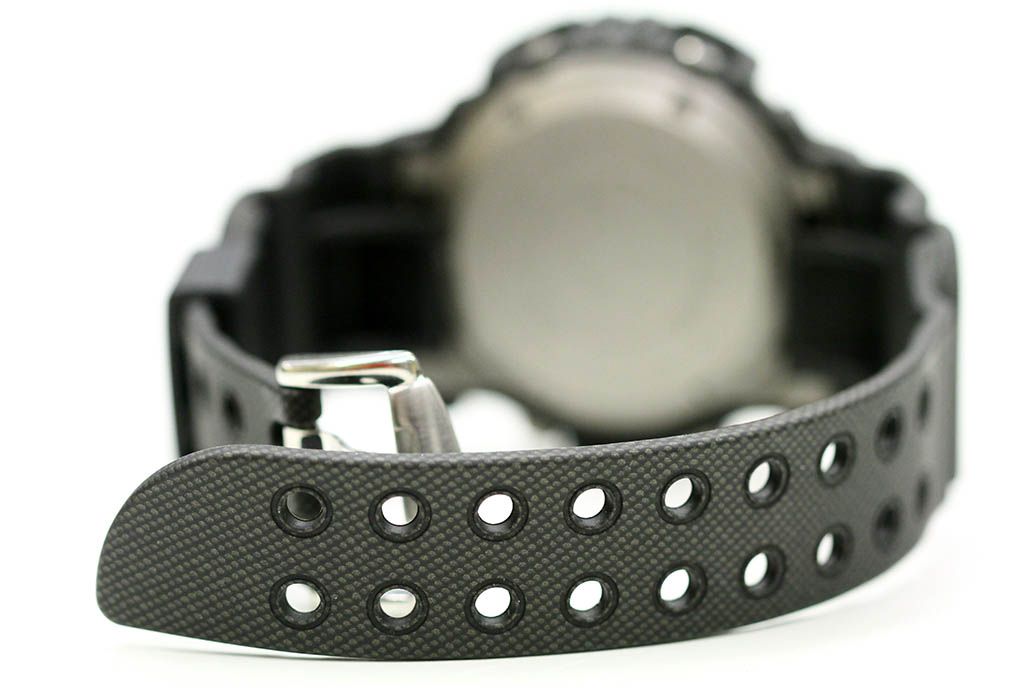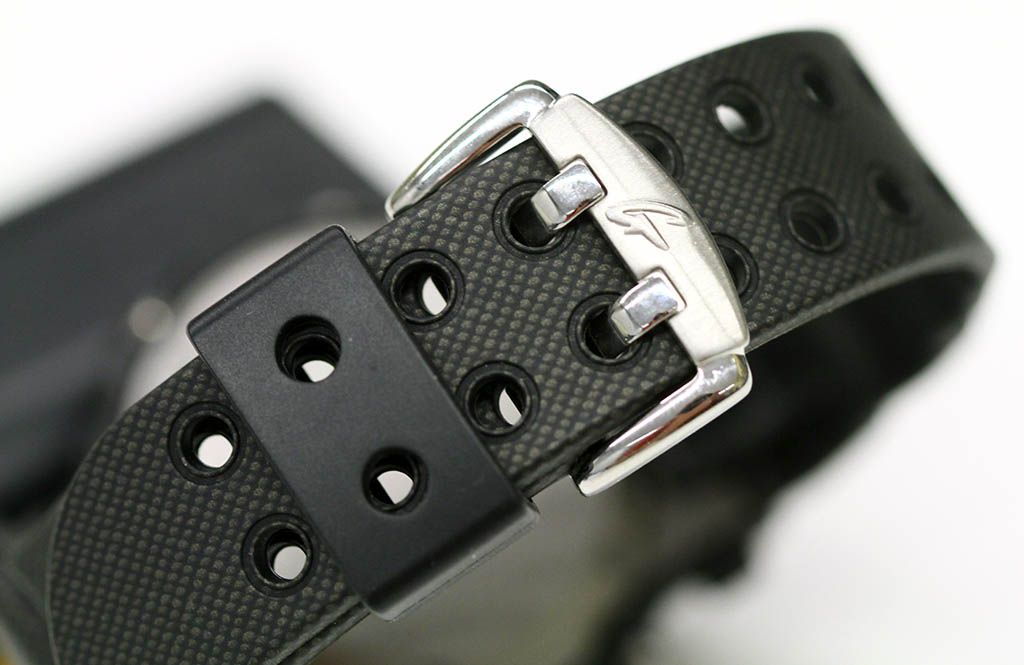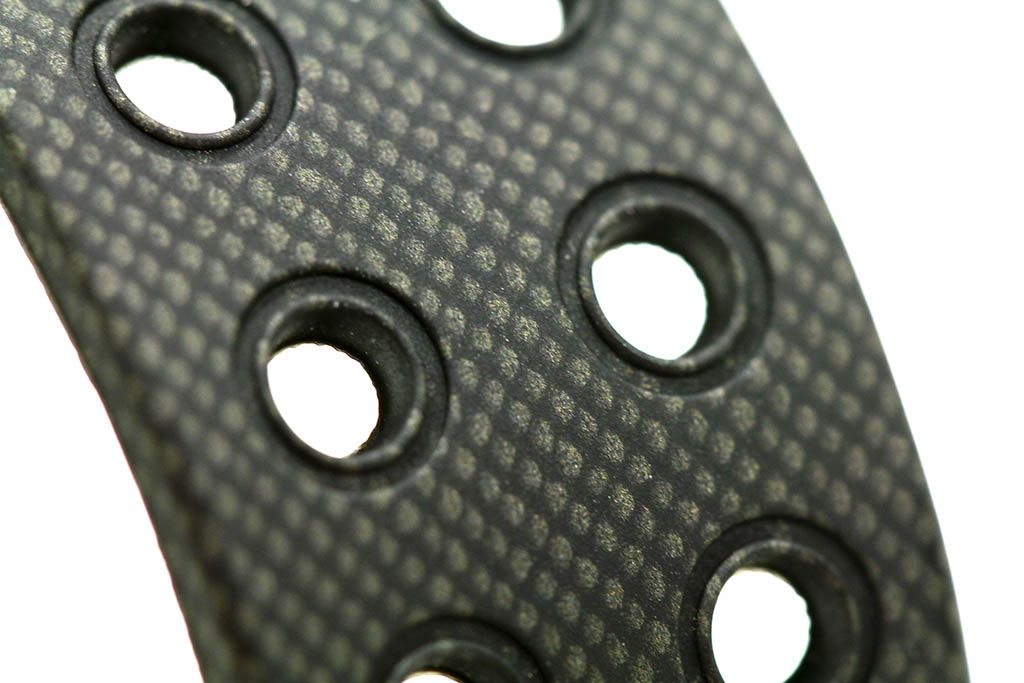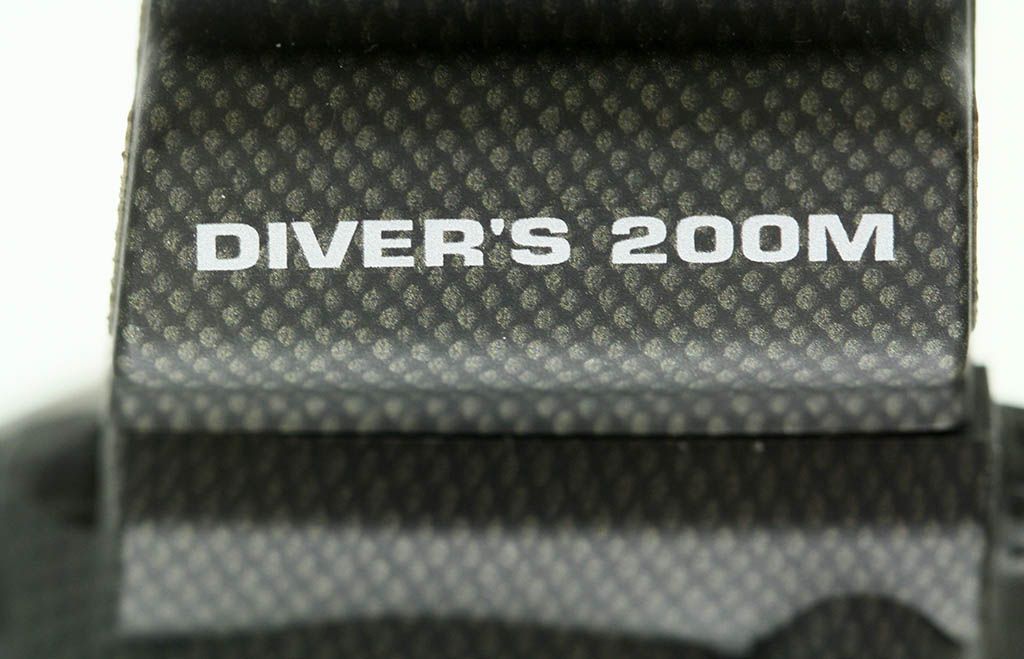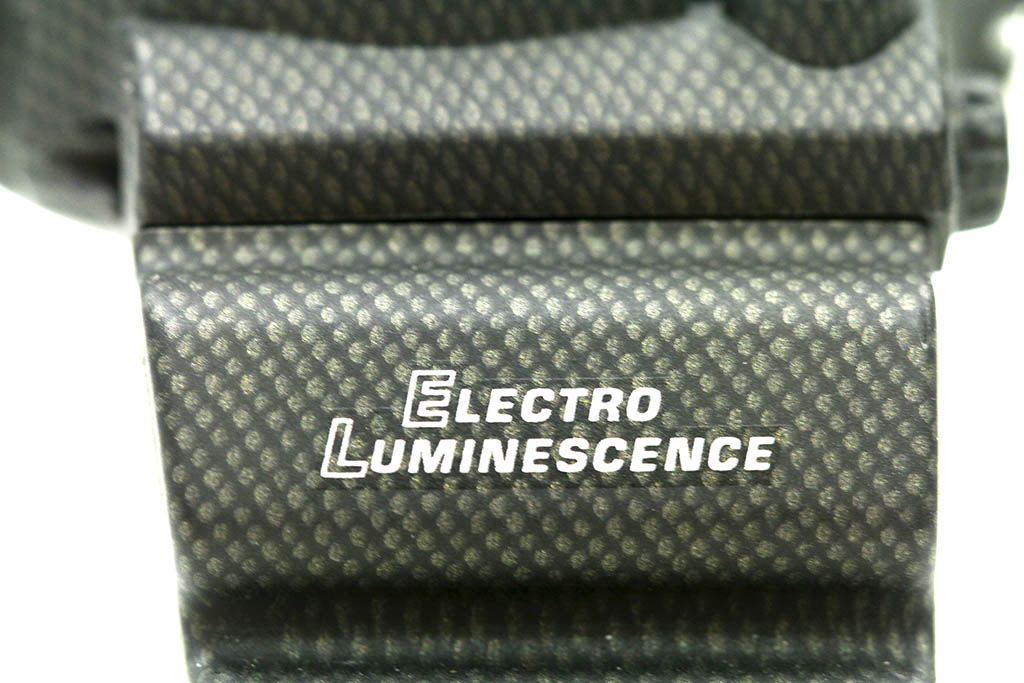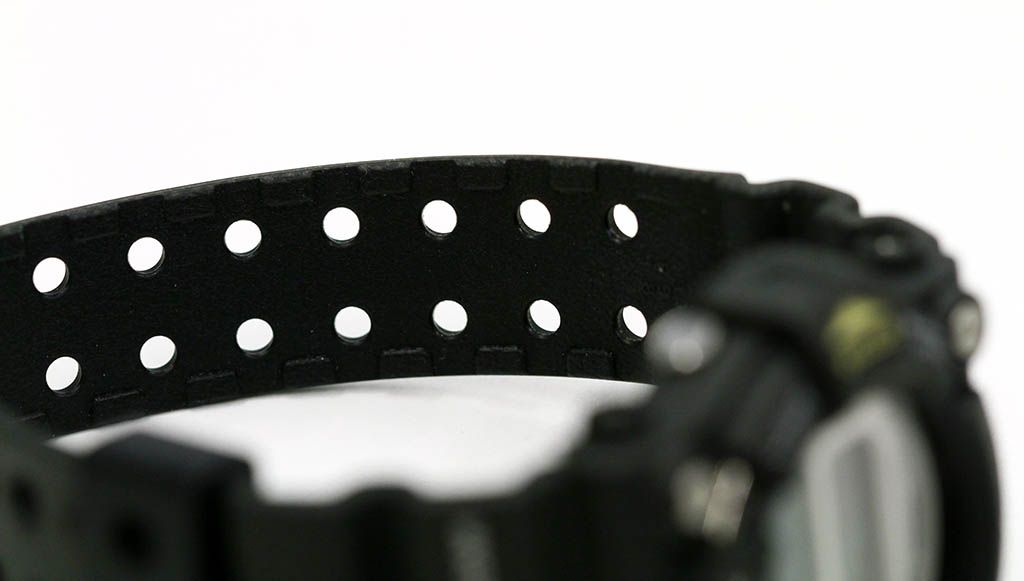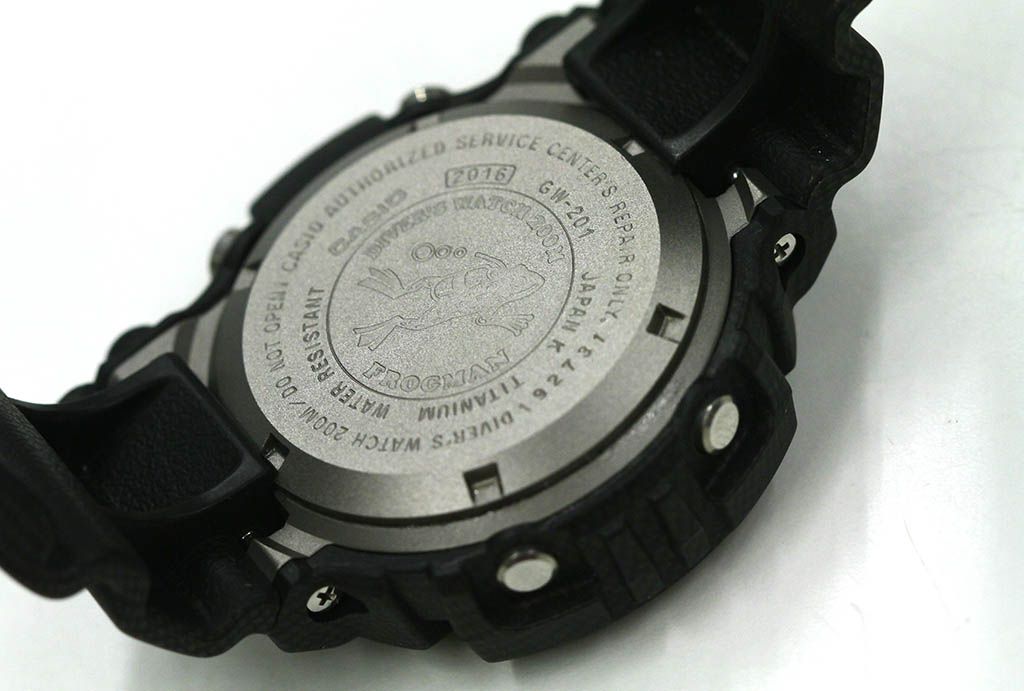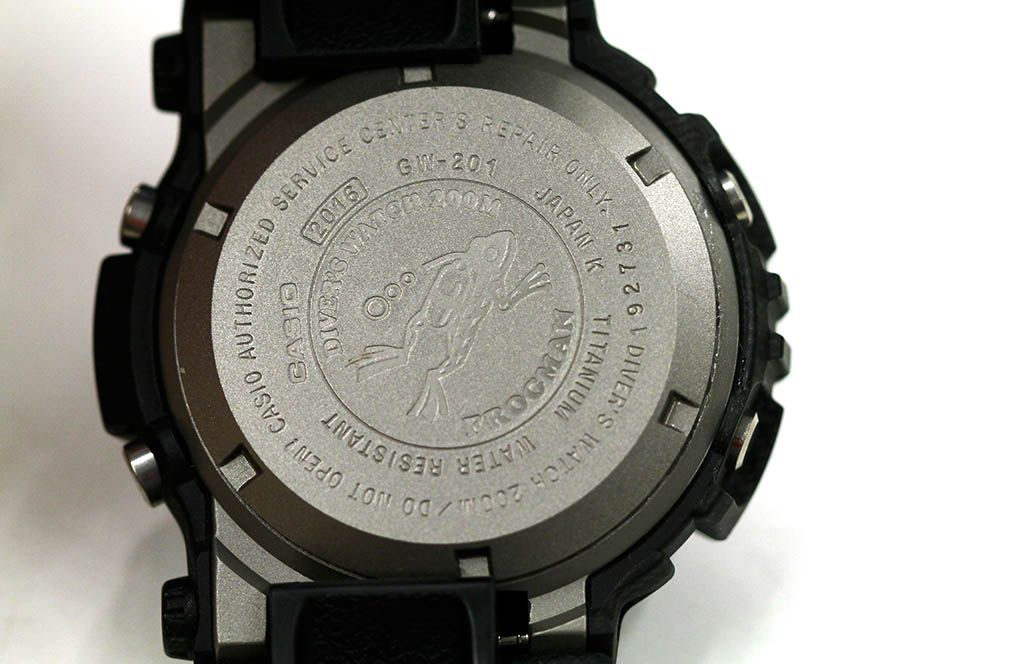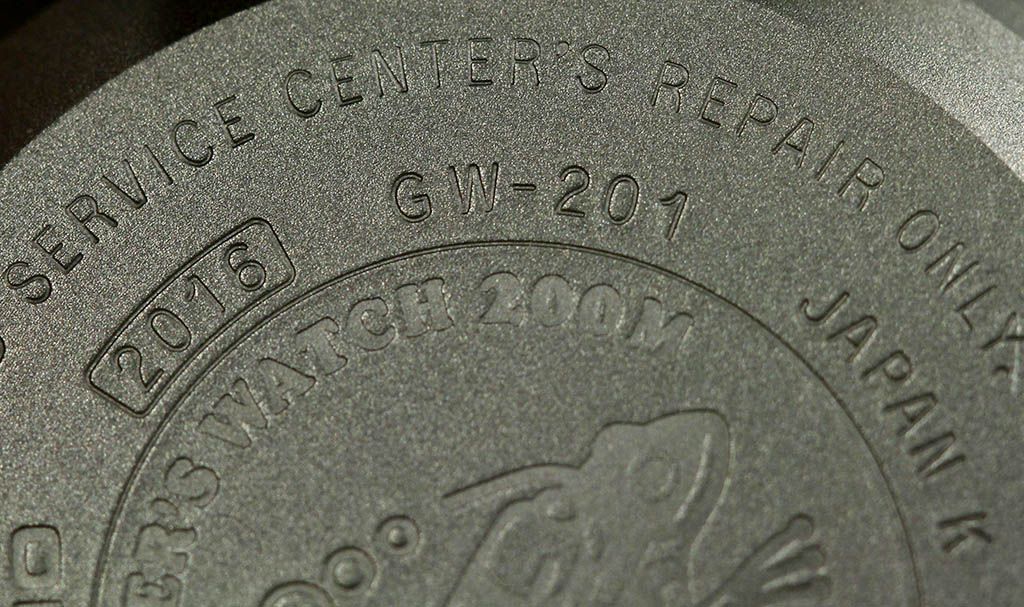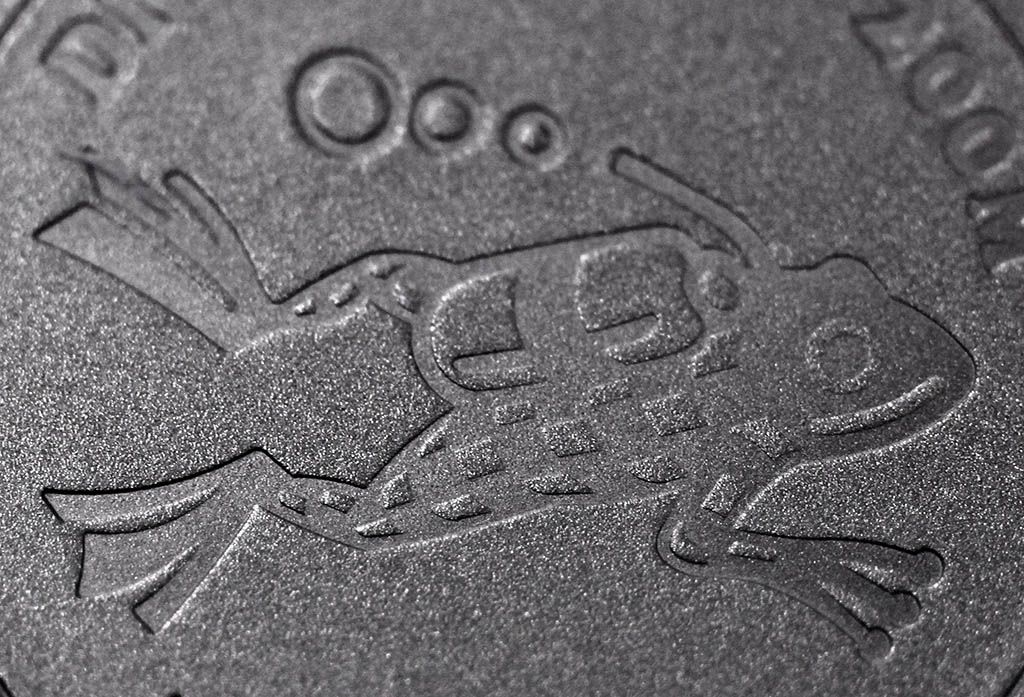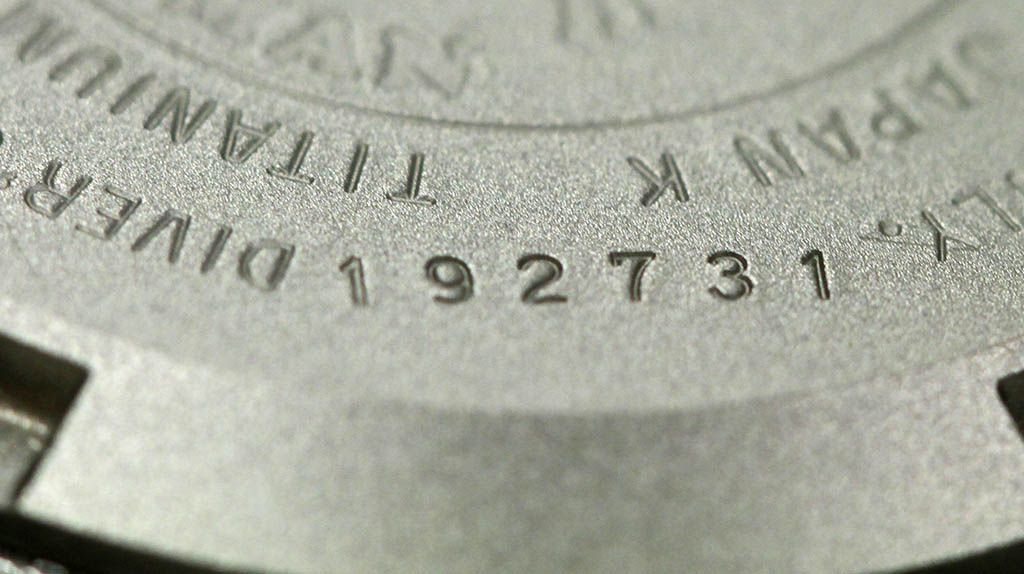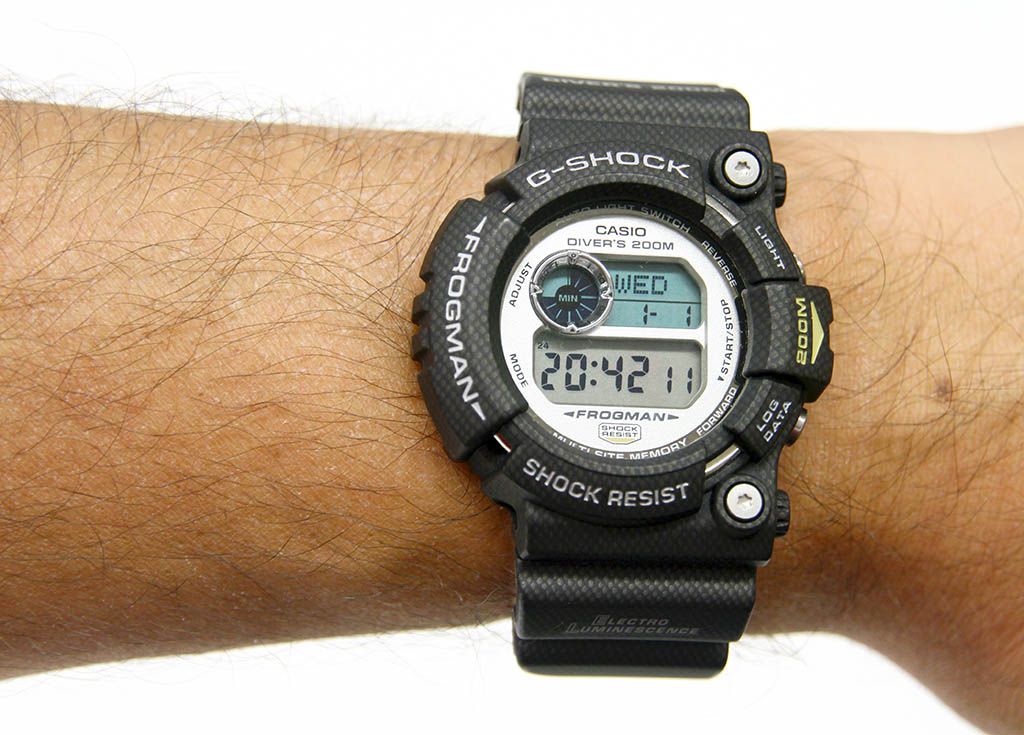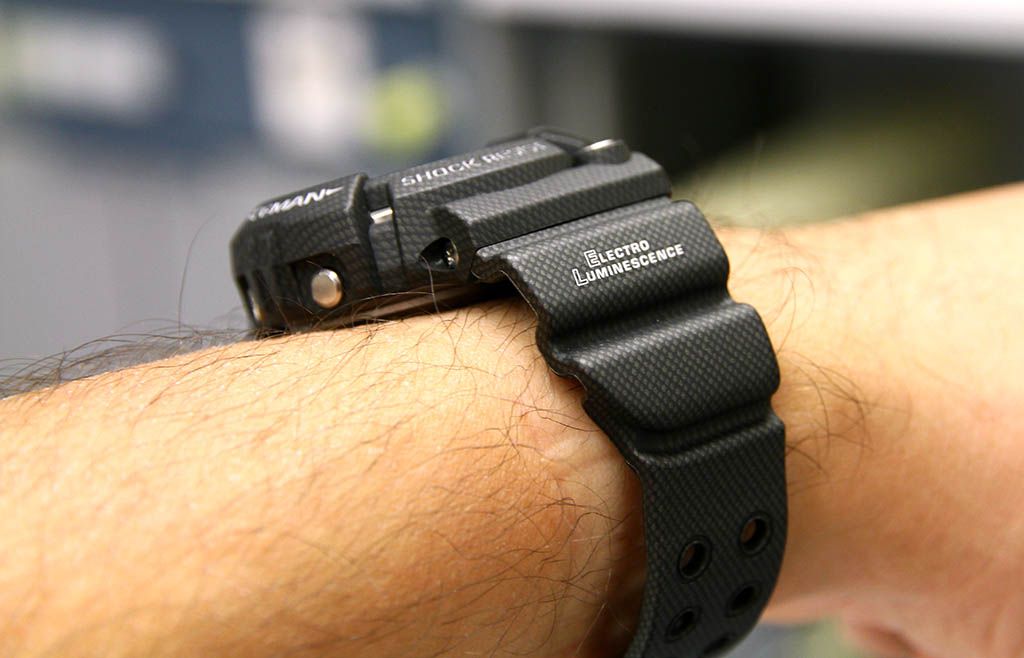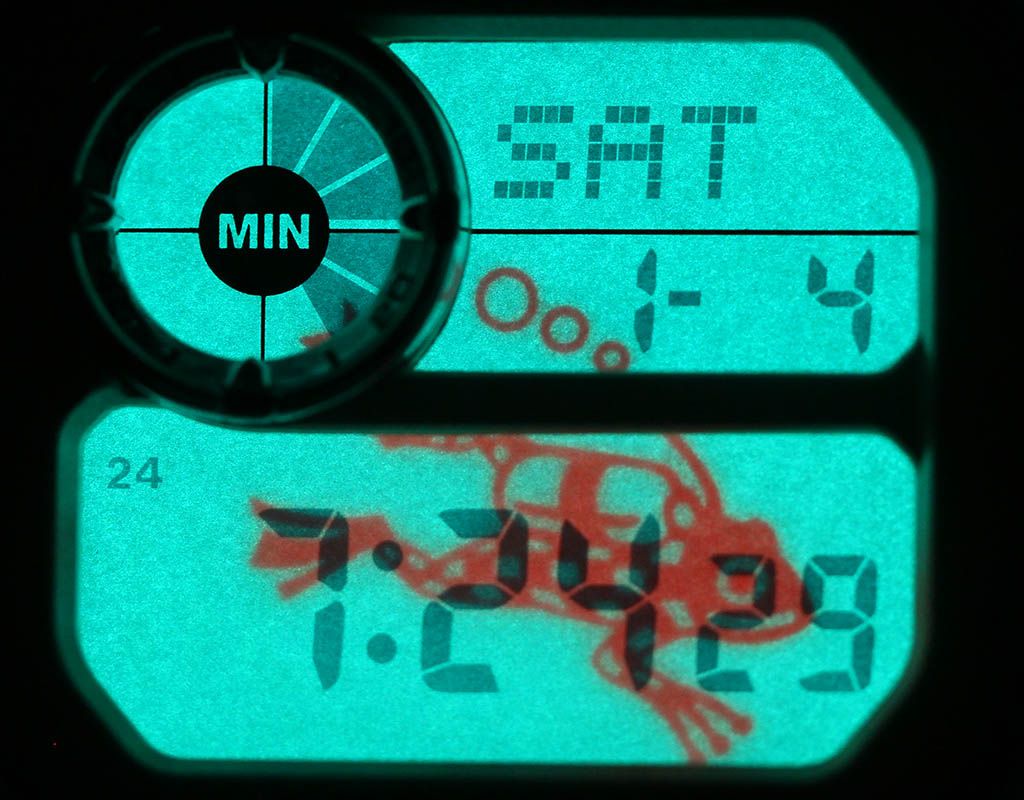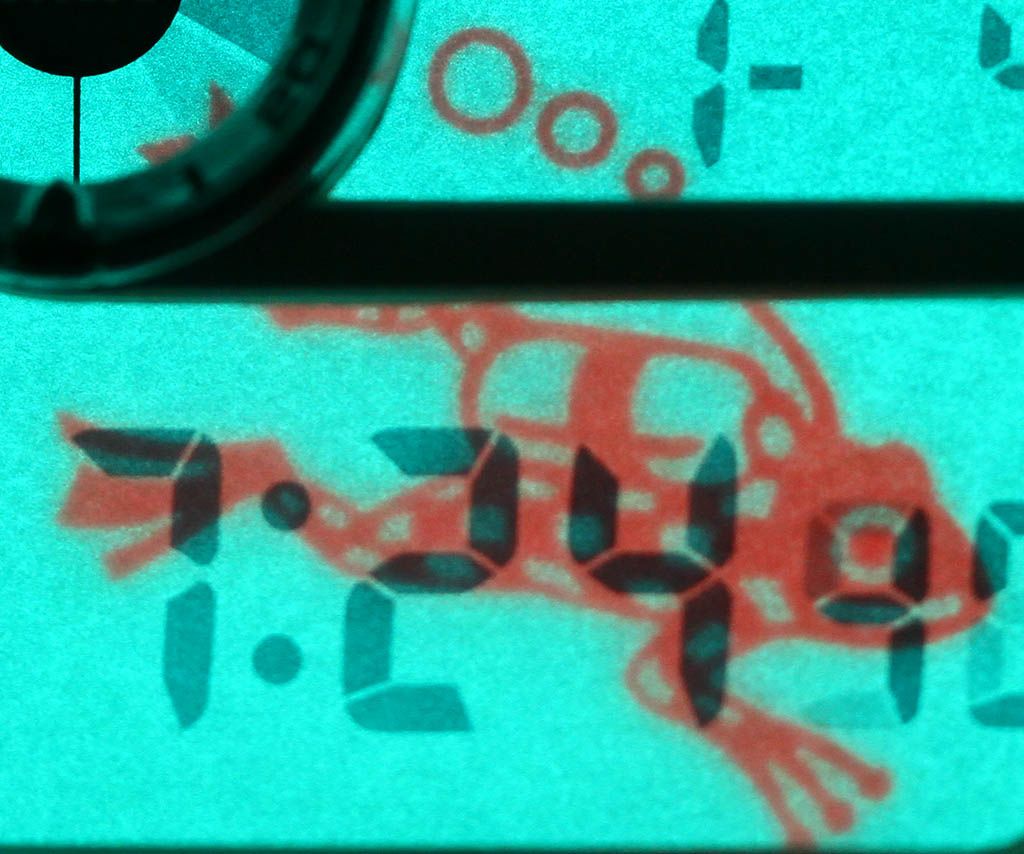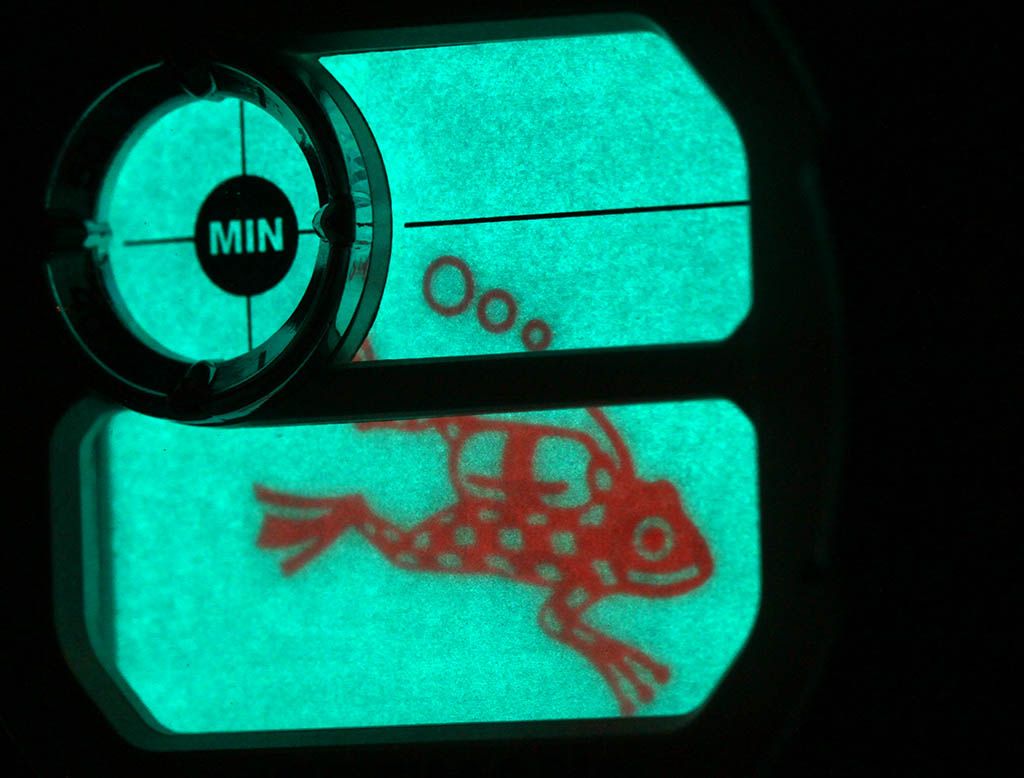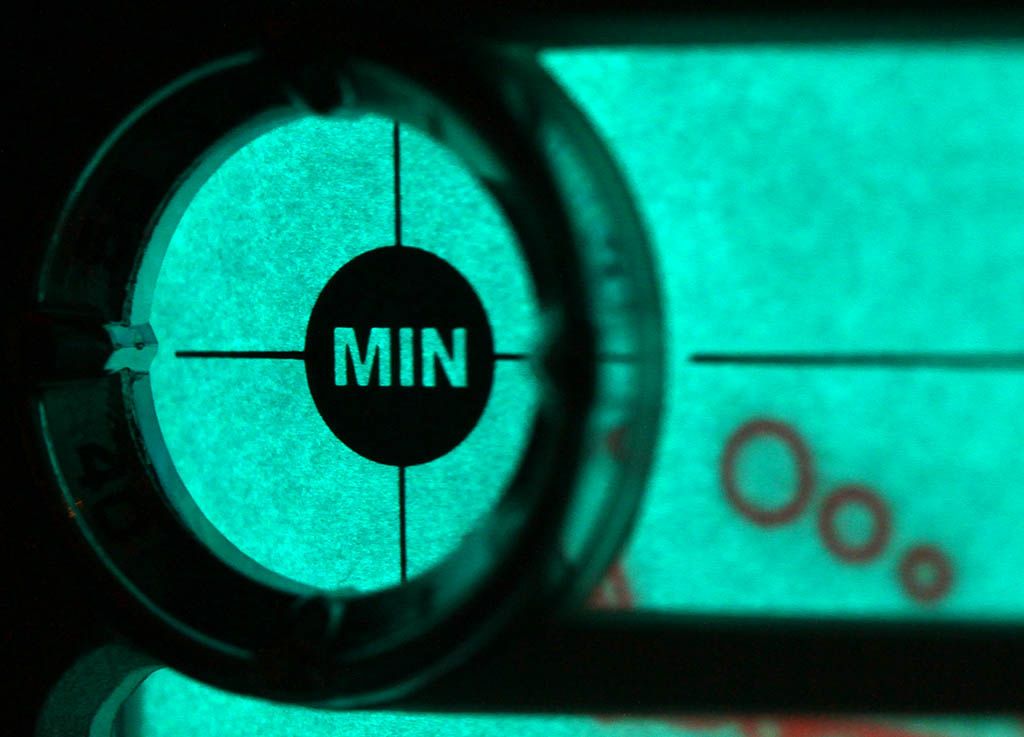This is not the only remarkable think about this Frogman. In 2001 we are at the dawn of the new, 3rd generation Frogman, the GW-200 series. The notation of “GW” suggests that in earlier stage Atomic Time keeping was planned, but somehow didn’t make it from the drawing board to the end product. Also, I think, this model was planned to be the first or second Frogman. The first GW-200 model was released 5 months earlier for the I.C.E.R.C. and had Tough Solar technology on board. This GW-201NT model wasn’t even solar. The module was similar of the DW-9900 type Frogman. Maybe there were problems with the printing process, which delayed the release of this model. In the past there have been problems with printed straps and bezels before, so it might be the case here too.
The disadvantage of a conventional battery Frogman compared to a Tough Solar Frogman is that you need to change the batteries from time to time. I changed the battery in January 2015 myself. The CR2016 clearly didn't last 9 years. Above is the proof of exchange of battery in August 2005, €8,- including waterproof test.
More interesting might be, why would Casio use a pattern of Carbon Fibre. With the term Carbon Fibre is often meant Carbon Fiber Reinforced Polymer. A carbon fibre is produced by pyrolyse of aryl fibres. One fibre is not very strong and can break easily, but bundled together into a yarn makes it much stronger. These yarns are woven into sheets. These sheets are reinforced with polymers, mostly epoxy resins. Often these reinforced carbon fibre material is left like it is, or sometimes the epoxy-resin is translucent colored, so that the woven fabric is still visible, giving it the typical carbon fibre pattern. Carbon fibre is known for its huge strength to weight ratio and therefore much used in aircrafts, race cars and sports equipment. I remember one of my students being very enthusiastic about the newest Adidas hockey stick, which was introduced at the World Cup 2014. Carbon fibre is not only a very strong and stiff material, it is also quite expensive.
Above and below are two pics I found on an Auction of a worn Carbon Frogman. You can clearly see the print come off, specially in the second pic. This happens of course after longer daily use.
I am not sure why Casio used this pattern on this Frogman. Probably it was done to make a statement that the watch and it’s resin parts are very strong and durable. Compared to most plastic wristwatches, this is quite true. The resin of a G-Shock generally has a live span of more than 20 years. The early prints though, are a point of discussion. My Carbon Fiber Frogman has never been worn, but it is known that a worn Carbon Fiber Frogman, as also with a worn Brazilian Frogman (GW-200CF-7JF), the print wears off, specially where the buckle meets the strap. Over the years there have been more problems with prints on straps, but it seems that Casio has found a solutions recently for this problem. Also, carbon fibre prints are not needed anymore. Several (high and higher end models) have Carbon Fibre insert straps nowadays.The GW-201NT is one of the only 2 battery driven GW-200 type (3rd Generation) Frogman models, this Carbon Fibre Frogman and the GW-201-6JR “Snake Killer” Frogman (August 2001). Up to today I am still puzzled why. The Tough Solar module (2242) on the regular GW-200 models are very good modules and it would have been probably relative simple to have those applied on those models too. Of course I do not know the philosophy behind this. It might also be that the 2422 modules were not yet available during the time of production (production date of my Carbon Frog is June 2001).
All Frogman models can be seen as the flagship model of G-Shock, although more high end models can easy compete with it nowadays. It is also quite a model you love or don’t love. Due to it’s asymmetrical design and weight (although the case and back are made of titanium, it’s still quite a heavy watch) it’s not a watch for everyone. What a Frogman model sets apart from the other G-Shock models is the ISO certification for it’s 20 BAR Waterproofness. This means all Frogmans produced are thoroughly tested before they leave the factory. If several tests fail, even a batch can be taken out of production to be reviewed again. I remember this happened with the Final Frogman (GW-200Z-1JF). This model became available about 1 month later than planned, due to sealing problems of the back (according to one of my regular dealers in Japan).
The 2016 has only been used for two years in Frogman models, before it was replaced by the solar 2422 module. A pretty much cool and distinguished feature is the upper display split in two parts. The big eye is nice, but unfortunately it displays the minutes. I would rather have liked to see the seconds moving here. You can toggle between the different modes by the MODE button (lower left). A special Frogman feature can be reached by press and holding the MODE button. This brings you in a little bit hidden feature, called the Dive Time Measurement Mode. It’s a kind of Stopwatch Mode, in which you can measure your dive time. It you make several dives, you can also measure accumulated dive time. You can view back your Dive data in the Log Data. For more information on using the Dive Time Measurement and the Log Data, I kindly refer to the manual. If you Press and holding the MODE button will bring you back to normal Timekeeping Mode.
By pressing the MODE button, you get into Site Mode with 10 sites. It is a bit tricky with only 10 sites, as your “Home Site” is used as base for Time Keeping Mode. This often means, you need to change one of the sites into your location. Then set the correct offset of GMT and you can use this feature.
Next you find the Identification Mode. Remember this module was produced far before the use of smartphones. Here you can store your Name, Credit Card number, Passport number, Emergency number and Blood Type. While Japan is a very safe country, it was probably a good idea to store these numbers if you live there, but I think in most parts of the world it is probably not wise to store your Credit Card number in your wristwatch, though you nowadays luckily have a conformation number or a PIN-code to protect your card a bit. Further more you find an Alarm Mode with three Alarms and a Hourly Time Signal, a 24 hour Countdown Alarm Mode and a 24 hour Stopwatch Mode.
The EL backlight shows a very cool diving frog, covered with carbon fibre. The EL can be used manually, but, probably handy for diving, you can also use Auto Illumination. In this case the EL backlight turns on when you twist your wrist towards you when holding your under arm parallel to the ground (pretty much the position you use to watch the time on your watch). It’s a pretty cool function, but it also drains the battery. Therefore this feature turns off after 6 hours after activation.
The Carbon Fibre Frogman is quite a sought after model for it’s unique look. It was produced in a high number in a time G-SHOCK collecting outside Japan was not popular, so finding one is probably to easy, but also not too hard, though you got to concentrate on Japanese Auctions. The prices vary quite a bit from around ¥19000 for a worn one to ¥40000 for a hardly worn or new in box model. I have bought mine from a friend in Australia. I have it since 2005, so I don’t know exactly what I paid for it. I think he made a special friend’s price somewhere around $250.-. Remember that was a high price for such a Frogman around that time. Frankly, I would not recommend this model for wearing. Like the Brazilian Frogman, the print wears of quite fast when it’s used as a daily wearer.

